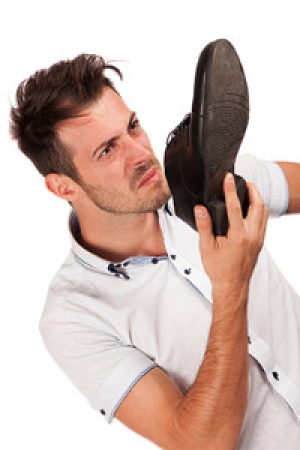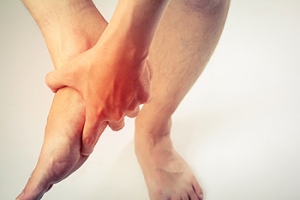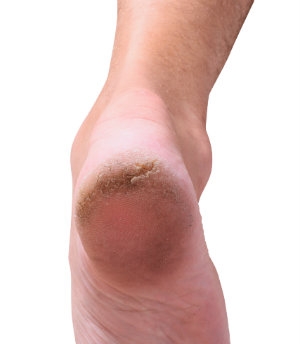Connect With Us
Blog

Achilles Tendon Injuries
The Achilles tendon is the largest tendon in the body; it is a tough band of fibrous tissue that stretches from the bones of the heel to the calf muscles. This tendon is what allows us to stand on our toes while running, walking, or jumping, it is common for this tendon to become injured. In severe cases, the Achilles tendon may become partially torn or completely ruptured. However, this tendon is susceptible to injury because of its limited blood supply and the high level of tension it endures.
The people who are more likely to suffer from Achilles tendon injuries are athletes who partake in activities that require them to speed up, slow down, or pivot. Consequently, athletes who engage in running, gymnastics, dance, football, baseball, basketball, or tennis are more likely to suffer from Achilles tendon injuries. Additionally, there are other factors that may make you more prone to this injury. People who wear high heels, have flat feet, tight leg muscles or tendons, or take medicines called glucocorticoids are more likely to have Achilles tendon injuries.
A common symptom of an Achilles tendon injury is pain above the heel that is felt when you stand on your toes. However, if the tendon is ruptured, the pain will be severe, and the area may become swollen and stiff. Other symptoms may be reduced strength in the lower ankle or leg area, and reduced range of motion in the ankle. When the Achilles tendon tears, there is usually a popping sound that occurs along with it. People who have acute tears or ruptures may find walking and standing to be difficult.
If you suspect you have injured your Achilles tendon, you should see your podiatrist to have a physical examination. Your podiatrist will likely conduct a series of tests to diagnose your injury including a “calf-squeeze” test. Calf squeeze tests are performed by first squeezing the calf muscle on the healthy leg. This will pull on the tendon and consequently cause the foot to move. Afterward, the same test will be performed on the injured leg. If the tendon is torn, the foot won’t move because the calf muscle won’t be connected to the foot.
How to Combat Foot Odor
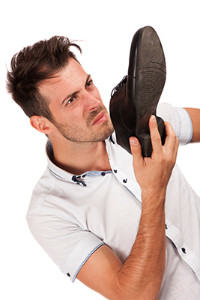 Sweaty feet are common and can unfortunately result in unpleasant odors. Those with hyperhidrosis of the feet, are especially prone to this inconvenience. Thankfully, there are ways to help eliminate or reduce foot odor caused by excessive sweat. Changing your socks mid-day and applying antifungal powder can help prevent dampness and fungus growth. The antifungal powder absorbs moisture and helps to keep fresh socks dry and clean. Washing your feet daily is also essential, even if you don’t shower every day. Cleaning your feet with antibacterial soap once a day, and applying antifungal powder helps to keep your feet dry and odor free. Applying essential oils such as tea tree and eucalyptus will also help eliminate odors, while adding a new pleasant smell to your feet. These essential oils have anti-inflammatory, antibacterial, and antiseptic properties, which makes them perfect for battling sweaty feet. If you have hyperhidrosis or feel that your feet sweat excessively, it is suggested that you speak with a podiatrist to learn more about treatment options.
Sweaty feet are common and can unfortunately result in unpleasant odors. Those with hyperhidrosis of the feet, are especially prone to this inconvenience. Thankfully, there are ways to help eliminate or reduce foot odor caused by excessive sweat. Changing your socks mid-day and applying antifungal powder can help prevent dampness and fungus growth. The antifungal powder absorbs moisture and helps to keep fresh socks dry and clean. Washing your feet daily is also essential, even if you don’t shower every day. Cleaning your feet with antibacterial soap once a day, and applying antifungal powder helps to keep your feet dry and odor free. Applying essential oils such as tea tree and eucalyptus will also help eliminate odors, while adding a new pleasant smell to your feet. These essential oils have anti-inflammatory, antibacterial, and antiseptic properties, which makes them perfect for battling sweaty feet. If you have hyperhidrosis or feel that your feet sweat excessively, it is suggested that you speak with a podiatrist to learn more about treatment options.
If you are suffering from hyperhidrosis contact one of our podiatrists of Pennsylvania Foot & Ankle. Our doctors can provide the care you need to attend to all of your foot and ankle needs.
Hyperhidrosis of the Feet
Hyperhidrosis is a rare disorder that can cause people to have excessive sweating of their feet. This can usually occur all on its own without rigorous activity involved. People who suffer from hyperhidrosis may also experience sweaty palms.
Although it is said that sweating is a healthy process meant to cool down the body temperature and to maintain a proper internal temperature, hyperhidrosis may prove to be a huge hindrance on a person’s everyday life.
Plantar hyperhidrosis is considered to be the main form of hyperhidrosis. Secondary hyperhidrosis can refer to sweating that occurs in areas other than the feet or hands and armpits. Often this may be a sign of it being related to another medical condition such as menopause, hyperthyroidism and even Parkinson’s disease.
In order to alleviate this condition, it is important to see your doctor so that they may prescribe the necessary medications so that you can begin to live a normal life again. If this is left untreated, it is said that it will persist throughout an individual’s life.
A last resort approach would be surgery, but it is best to speak with your doctor to find out what may be the best treatment for you.
If you have any questions, please feel free to contact one of our offices located in Bensalem, Philadelphia, Northeast Philadelphia, Yardley, PA, and Hamilton, NJ . We offer the newest diagnostic and treatment technologies for all your foot care needs.
Hyperhidrosis of the Feet
Hyperhidrosis of the feet, also termed plantar hyperhidrosis, is characterized by excessive sweating of the feet that can be onset by any cause, such as exercise, fever, or anxiety. Most people suffering from hyperhidrosis of the feet also experience hyperhidrosis of the hands, or palmar hyperhidrosis. Approximately 1-2% of Americans suffer from this disorder.
Sweating is a healthy process utilized by the body in order to cool itself and maintain a proper internal temperature, which is controlled by the sympathetic nervous system. In individuals with hyperhidrosis, the sympathetic nervous system works in "overdrive", producing far more sweat than is actually needed.
Plantar hyperhidrosis is considered primary hyperhidrosis. Secondary hyperhidrosis refers to excessive sweating that occurs in an area other than the feet, hands, or armpits, and this indicates that is related to another medical condition, such as menopause, hyperthyroidism, or Parkinson's disease.
Symptoms of hyperhidrosis of the feet can include foot odor, athlete's foot, infections, and blisters. Because of the continual moisture, shoes and socks can rot which creates an additional foul odor and can ruin the material, requiring shoes and socks to be replaced frequently. In addition to the physical symptoms, emotional health is often affected as this disorder can be very embarrassing.
If left untreated, hyperhidrosis will usually persist throughout an individual's life. However, there are several treatment options available. A common first approach to treating hyperhidrosis of the feet is a topical ointment. Aluminum chloride, an ingredient found in antiperspirants, can be effective at treating hyperhidrosis if used in high concentration and applied to the foot daily. Some individuals can experience relief this way, while others encounter extreme irritation and are unable to use the product. Another procedure is the use of Botulinum Toxin A, commonly referred to as Botox. This is injected directly into the foot, and is effective at minimizing the sweat glands in the injected area. These injections must be repeated every 4 to 9 months.
If these treatments are ineffective, oral prescription medications may be taken in an effort to alleviate the symptoms. Again, some will experience relief while others do not. Going barefoot reportedly provides relief for most sufferers.
A final approach to combating hyperhidrosis of the feet is through surgery. Surgery has been less successful on patients with plantar hyperhidrosis than on those with palmar hyperhidrosis. It is only recommended when sweating is severe and other treatments have failed to work. This kind of surgery usually involves going into the central nervous system, and cutting nerves to stop the transmission of signals telling the foot to sweat.
Treating Cuboid Syndrome
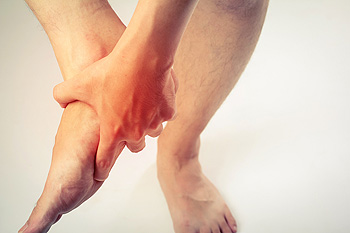 Cuboid syndrome is caused by the cuboid bone shifting out of alignment with surrounding bones, which then may cause pain in the middle of the foot. There are various forms of treatment for cuboid syndrome, including home remedies and help from a medical professional. The first step in treating this condition involves rest, because reducing activity that puts pressure on the injured area might give the bone space to heal. Home remedies involve, resting, icing, compressing and elevating the foot. If the pain perseveres, then it may be time to seek help from a medical professional. Two examples of possible treatments are the cuboid whip and the cuboid squeeze. Both options involve manipulating the cuboid bone back into place. Manipulation should be more successful when it is done within 24 hours after the injury occurs, so seeking professional help is important. Foot manipulation may not be the best option if an individual is dealing with other foot conditions, so if you feel that you may have cuboid syndrome or have similar pain, then it is recommended to speak to a podiatrist to find the right treatment for your specific needs.
Cuboid syndrome is caused by the cuboid bone shifting out of alignment with surrounding bones, which then may cause pain in the middle of the foot. There are various forms of treatment for cuboid syndrome, including home remedies and help from a medical professional. The first step in treating this condition involves rest, because reducing activity that puts pressure on the injured area might give the bone space to heal. Home remedies involve, resting, icing, compressing and elevating the foot. If the pain perseveres, then it may be time to seek help from a medical professional. Two examples of possible treatments are the cuboid whip and the cuboid squeeze. Both options involve manipulating the cuboid bone back into place. Manipulation should be more successful when it is done within 24 hours after the injury occurs, so seeking professional help is important. Foot manipulation may not be the best option if an individual is dealing with other foot conditions, so if you feel that you may have cuboid syndrome or have similar pain, then it is recommended to speak to a podiatrist to find the right treatment for your specific needs.
Cuboid syndrome, also known as cuboid subluxation, occurs when the joints and ligaments near the cuboid bone in the foot become torn. If you have cuboid syndrome, consult with one of our podiatrists from Pennsylvania Foot & Ankle. Our doctors will assess your condition and provide you with quality foot and ankle treatment.
Cuboid syndrome is a common cause of lateral foot pain, which is pain on the outside of the foot. The condition may happen suddenly due to an ankle sprain, or it may develop slowly overtime from repetitive tension through the bone and surrounding structures.
Causes
The most common causes of cuboid syndrome include:
- Injury – The most common cause of this ailment is an ankle sprain.
- Repetitive Strain – Tension placed through the peroneus longus muscle from repetitive activities such as jumping and running may cause excessive traction on the bone causing it to sublux.
- Altered Foot Biomechanics – Most people suffering from cuboid subluxation have flat feet.
Symptoms
A common symptom of cuboid syndrome is pain along the outside of the foot which can be felt in the ankle and toes. This pain may create walking difficulties and may cause those with the condition to walk with a limp.
Diagnosis
Diagnosis of cuboid syndrome is often difficult, and it is often misdiagnosed. X-rays, MRIs and CT scans often fail to properly show the cuboid subluxation. Although there isn’t a specific test used to diagnose cuboid syndrome, your podiatrist will usually check if pain is felt while pressing firmly on the cuboid bone of your foot.
Treatment
Just as the range of causes varies widely, so do treatments. Some more common treatments are ice therapy, rest, exercise, taping, and orthotics.
If you have any questions, please feel free to contact one of our offices located in Bensalem, Philadelphia, Northeast Philadelphia, Yardley, PA, and Hamilton, NJ . We offer the newest diagnostic and treatment technologies for all your foot care needs.
Cuboid Syndrome
Cuboid syndrome mostly affects athletes, although it can affect non-athletes too. It is also known as cuboid subluxation or cuboid fault syndrome. This condition occurs when joints and ligaments near the cuboid bone of the foot are damaged, or when the cuboid bone itself is dislodged from its natural position. It is usually marked by pain on the outer side of the foot, which may be persistent or may come and go. Cuboid syndrome can be difficult to diagnose unless it becomes severe and more noticeable. Your doctor will likely ask questions about when the pain began and how long it has been present, and will put pressure on the cuboid bone to determine if that area is the origin of the pain.
Causes of Cuboid Syndrome
- Any repetitive stresses placed on the foot due to athletic activities are a common cause of cuboid syndrome.
- Although it develops over time, it is possible that this syndrome can occur all of sudden due to a single event or injury.
- Over-pronation can exacerbate the condition if not corrected.
Disagreements Amongst Podiatrists Regarding Cuboid Syndrome
- Some refer to it as the dislocation of the calcaneal-cuboid joint only.
- Other podiatrists see it as an injury of the ligaments located nearby, which also involves the cuboid bone.
It is very important that when you experience any kind of pain on the side of your foot, you should seek medical care right away. If a subluxed cuboid is caught early, your feet may respond well to the treatment, and you can get back into sports or other activities again as soon as the pain subsides.
Symptoms of a Broken Toe
 The symptoms may be similar in sprained and broken toes, and it may be difficult to determine the extent of the injury. If the bone is intact, it is most likely a sprained toe, and one or more broken bones are indicative of a fractured toe. There are several symptoms that are associated with broken toes, including severe discomfort and pain beginning at the time of the injury, bruising on the toe and surrounding area, in addition to the inability to walk and put weight on it. Two common causes for broken toes to occur may include stubbing it against something hard or dropping a heavy object on it. Once a proper diagnosis is performed, which typically consists of having an X-ray taken, it will be confirmed if the toe is broken. At this time, the correct treatment procedure can begin, which will generally include resting the toe, and splinting it to the toe next to it, which may aid in stabilizing it. If you feel you have broken your toe, it is recommended that you speak to a podiatrist as quickly as possible, so a proper diagnosis can be determined.
The symptoms may be similar in sprained and broken toes, and it may be difficult to determine the extent of the injury. If the bone is intact, it is most likely a sprained toe, and one or more broken bones are indicative of a fractured toe. There are several symptoms that are associated with broken toes, including severe discomfort and pain beginning at the time of the injury, bruising on the toe and surrounding area, in addition to the inability to walk and put weight on it. Two common causes for broken toes to occur may include stubbing it against something hard or dropping a heavy object on it. Once a proper diagnosis is performed, which typically consists of having an X-ray taken, it will be confirmed if the toe is broken. At this time, the correct treatment procedure can begin, which will generally include resting the toe, and splinting it to the toe next to it, which may aid in stabilizing it. If you feel you have broken your toe, it is recommended that you speak to a podiatrist as quickly as possible, so a proper diagnosis can be determined.
Broken toes may cause a lot of pain and should be treated as soon as possible. If you have any concerns about your feet, contact one of our podiatrists from Pennsylvania Foot & Ankle. Our doctors will treat your foot and ankle needs.
What Is a Broken Toe?
A broken toe occurs when one or more of the toe bones of the foot are broken after an injury. Injuries such as stubbing your toe or dropping a heavy object on it may cause a toe fracture.
Symptoms of a Broken Toe
- Swelling
- Pain (with/without wearing shoes)
- Stiffness
- Nail Injury
Although the injured toe should be monitored daily, it is especially important to have a podiatrist look at your toe if you have severe symptoms. Some of these symptoms include worsening or new pain that is not relieved with medication, sores, redness, or open wounds near the toe.
If you have any questions please feel free to contact one of our offices located in Bensalem, Philadelphia, Northeast Philadelphia, Yardley, PA, and Hamilton, NJ . We offer the newest diagnostic tools and technology to treat your foot and ankle needs.
What to Know About a Broken Toe
Trauma to the foot, especially the toes, can occur in many ways. Banging them, stubbing them, or dropping something on them are a few different ways this trauma can occur. Given the fact that toes are positioned in front of the feet, they typically sustain the brunt of such trauma. When trauma occurs to a toe, the result can be a painful break or fracture. Another type of trauma that can break a toe is repeated activity that places stress on the toe for prolonged periods of time.
Broken toes can be categorized as either minor or severe fractures. Symptoms of minor toe fractures include throbbing pain, swelling, bruising on the skin and toenail, and the inability to move the toe with ease. Severe toe fractures require medical attention and are indicated when the broken toe appears crooked or disfigured, when there is tingling or numbness in the toe, or when there is an open, bleeding wound present on the toe.
Generally, a minor toe break will heal without long-term complications. However, it is important to discontinue activities that put pressure on the toe. It is best to stay off of the injured toe and immediately get a splint or cast to prevent any more additional movement of the toe bones. You can also immobilize your toe by placing a small cotton ball between the injured toe and the toe beside it. Then, tape the two toes together with medical tape. Swelling can be alleviated by placing an ice pack on the broken toe directly as well as elevating your feet above your head.
Severe toe fractures may be treated with a splint, cast, and in some cases, minor surgery, especially when the big toe has been broken. Due to its position and the pressure the big toe endures with daily activity, future complications can occur if it is not properly treated. Pain associated with minor toe fractures can be managed with over-the-counter pain medications. Prescription pain killers may be necessary for severe toe fractures.
The healing time for a broken toe is approximately four to six weeks. In severe cases where the toe becomes infected or requires surgery, healing time can take up to eight weeks or more. While complications associated with a broken toe are immediately apparent, it is important to note that there are rare cases when additional complications, such as osteoarthritis, can develop over time. You should immediately speak with your podiatrist if you think you have broken your toe due to trauma. They will be able to diagnose the injury and recommend the appropriate treatment options.
What Causes Cracked Heels?
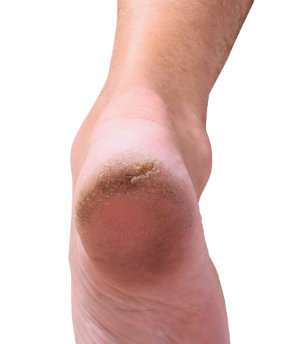 If you notice thickened skin in the heel area of your foot, you may have a condition that is known as cracked heels. This may typically cause severe pain and discomfort as cracks, or fissures form in the skin of the heel. There are reasons why this may occur, which may include standing for extended periods of time, or wearing shoes that have an open back which exposes the heel. Additionally, there may be medical conditions that can cause cracked heels, including diabetes, certain vitamin deficiencies, psoriasis, or fungal infections. Symptoms that many patients experience may include pain, or flaking skin. Mild relief may be found when a good moisturizer is applied frequently to the skin on the heels. If you are afflicted with cracked heels, it is suggested to consult with a podiatrist to discuss proper treatment methods that are correct for you.
If you notice thickened skin in the heel area of your foot, you may have a condition that is known as cracked heels. This may typically cause severe pain and discomfort as cracks, or fissures form in the skin of the heel. There are reasons why this may occur, which may include standing for extended periods of time, or wearing shoes that have an open back which exposes the heel. Additionally, there may be medical conditions that can cause cracked heels, including diabetes, certain vitamin deficiencies, psoriasis, or fungal infections. Symptoms that many patients experience may include pain, or flaking skin. Mild relief may be found when a good moisturizer is applied frequently to the skin on the heels. If you are afflicted with cracked heels, it is suggested to consult with a podiatrist to discuss proper treatment methods that are correct for you.
Cracked heels are unsightly and can cause further damage to your shoes and feet. If you have any concerns, contact one of our podiatrists from Pennsylvania Foot & Ankle. Our doctors can provide the care you need to keep you pain-free and on your feet.
Cracked Heels
Cracked heels appear unappealing and can make it harder for you walk around in sandals. Aside from looking unpleasant, cracked heels can also tear stockings, socks, and wear out your shoes. There are several methods to help restore a cracked heel and prevent further damage.
How Do You Get Them?
Dry skin is the number one culprit in creating cracked heels. Many athletes, walkers, joggers, and even swimmers suffer from cracked heels. Age and skin oil production play a role to getting cracked heels as well.
Promote Healing
Over the counter medicines can help, especially for those that need instant relief or who suffer from chronic dry feet.
Wear Socks – Wearing socks with medicated creams helps lock in moisture.
Moisturizers – Applying both day and night will help alleviate dryness which causes cracking.
Pumice Stones – These exfoliate and remove dead skin, which allows for smoother moisturizer application and better absorption into the skin.
Change in Diet
Eating healthy with a well-balanced diet will give the skin a fresh and radiant look. Your body responds to the kinds of food you ingest. Omega-3 fatty acids and zinc supplements can also revitalize skin tissue.
Most importantly, seek professional help if unsure how to proceed in treating cracked heels. A podiatrist will help you with any questions or information needed.
If you have any questions, please feel free to contact one of our offices located in Bensalem, Philadelphia, Northeast Philadelphia, Yardley, PA, and Hamilton, NJ . We offer the newest diagnostic and treatment technologies for all your foot care needs.
Solutions for Cracked Heels
Cracked heels can make life very frustrating and embarrassing when displaying the bare feet. Aside from being unpleasing to the eye, they can also tear stockings and socks and wear out shoes at a faster rate. When severe, cracked heels may cause pain or infection.
Cracked heels are a problem for those who are athletic, those who may walk a lot, and those who have especially dry skin. Those who use medication that dry the skin, those who swim often, wearing certain types of shoes, and those who are diabetic may have trouble with cracked heels. Seniors whose skin produces less oil may also have trouble with cracked feet. There is no one way to develop cracked feet, and there is no cure.
Today, the market consists of numerous products that have a variety of ingredients to promote healing. Some of these are over-the-counter. Others are prescribed by a doctor, especially for those who have chronic dry feet and heels.
Some doctors recommend wearing socks at night for those with rough skin. This helps further healing, and helps creams stay on longer and better absorb into the skin.
One way to alleviate dryness that causes cracked heels is by using moisturizers both day and night. Another way is to make sure the skin is clean and dry at all times. Using a pumice stone to buff away dead skin before putting on moisturizer can also help. Cracked heels will not respond to the cream unless the outer layer of skin is first removed through exfoliation. After exfoliation, lotion or ointment will be absorbed by the skin more easily.
Foods that produce healing and balance can also help the skin from within. Everything that is put into the body can either help it or hurt it. Taking supplements of omega-3 fatty acids and zinc can also be very beneficial.
Nevertheless, not all products are guaranteed to help treat cracked feet. Seeing a professional is best if other treatments options were unsuccessful. A podiatrist should be able to give the best advice to help with this problem.
What Causes Bunions to Develop?
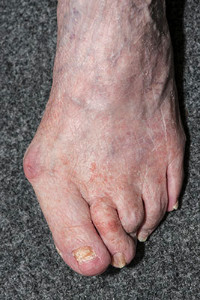 Patients that have bunions may notice a bump that has formed on the side of the big toe. This may happen when the big toe leans in toward the other toes, causing the bone to gradually protrude. Many patients may notice soreness at the base of the bunion, in addition to skin that has become hardened and callused. Research has indicated that bunions may be genetic, or may develop as a result of medical conditions that may include gout and rheumatoid arthritis. Additionally, bunions may develop if incorrect shoes are worn which may not provide adequate room for the toes to move freely. Treatment options may include wearing custom-made orthotics, or cushioning the area with a bunion pad. If you notice a bunion developing, it is suggested to speak to a podiatrist who can guide you toward proper treatment.
Patients that have bunions may notice a bump that has formed on the side of the big toe. This may happen when the big toe leans in toward the other toes, causing the bone to gradually protrude. Many patients may notice soreness at the base of the bunion, in addition to skin that has become hardened and callused. Research has indicated that bunions may be genetic, or may develop as a result of medical conditions that may include gout and rheumatoid arthritis. Additionally, bunions may develop if incorrect shoes are worn which may not provide adequate room for the toes to move freely. Treatment options may include wearing custom-made orthotics, or cushioning the area with a bunion pad. If you notice a bunion developing, it is suggested to speak to a podiatrist who can guide you toward proper treatment.
If you are suffering from bunions, contact one of our podiatrists of Pennsylvania Foot & Ankle. Our doctors can provide the care you need to keep you pain-free and on your feet.
What Is a Bunion?
A bunion is formed of swollen tissue or an enlargement of boney growth, usually located at the base joint of the toe that connects to the foot. The swelling occurs due to the bones in the big toe shifting inward, which impacts the other toes of the foot. This causes the area around the base of the big toe to become inflamed and painful.
Why Do Bunions Form?
Genetics – Susceptibility to bunions are often hereditary
Stress on the feet – Poorly fitted and uncomfortable footwear that places stress on feet, such as heels, can worsen existing bunions
How Are Bunions Diagnosed?
Doctors often perform two tests – blood tests and x-rays – when trying to diagnose bunions, especially in the early stages of development. Blood tests help determine if the foot pain is being caused by something else, such as arthritis, while x-rays provide a clear picture of your bone structure to your doctor.
How Are Bunions Treated?
- Refrain from wearing heels or similar shoes that cause discomfort
- Select wider shoes that can provide more comfort and reduce pain
- Anti-inflammatory and pain management drugs
- Orthotics or foot inserts
- Surgery
If you have any questions, please feel free to contact one of our offices located in Bensalem, Philadelphia, Northeast Philadelphia, Yardley, PA, and Hamilton, NJ . We offer the newest diagnostic and treatment technologies for all your foot care needs.
Blog Archives
- November 2025
- October 2025
- September 2025
- August 2025
- July 2025
- June 2025
- May 2025
- April 2025
- March 2025
- February 2025
- January 2025
- December 2024
- November 2024
- October 2024
- September 2024
- August 2024
- July 2024
- June 2024
- May 2024
- April 2024
- March 2024
- February 2024
- January 2024
- December 2023
- November 2023
- October 2023
- September 2023
- August 2023
- July 2023
- June 2023
- May 2023
- April 2023
- March 2023
- February 2023
- January 2023
- December 2022
- November 2022
- October 2022
- September 2022
- August 2022
- July 2022
- June 2022
- May 2022
- April 2022
- March 2022
- February 2022
- January 2022
- December 2021
- November 2021
- October 2021
- September 2021
- August 2021
- July 2021
- June 2021
- May 2021
- April 2021
- March 2021
- February 2021
- January 2021
- December 2020
- November 2020
- October 2020
- September 2020
- August 2020
- July 2020
- June 2020
- May 2020
- April 2020
- March 2020
- February 2020
- January 2020
- December 2019
- November 2019
- October 2019
- September 2019
- August 2019
- July 2019
- June 2019
- May 2019
- April 2019
- March 2019
- February 2019
- January 2019
- December 2018
- November 2018
- October 2018
- September 2018
- August 2018
- July 2018
- June 2018
- May 2018
- April 2018
- March 2018
- February 2018
- January 2018
- December 2017
- November 2017
- October 2017
- September 2017
- August 2017
- July 2017
- June 2017
- May 2017
- April 2017
- March 2017
- February 2017
- January 2017
- December 2016
- November 2016
